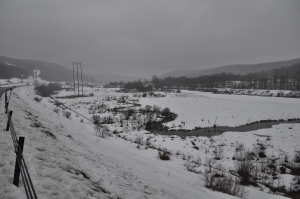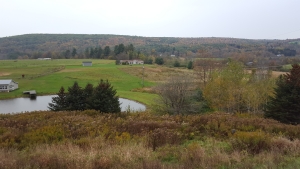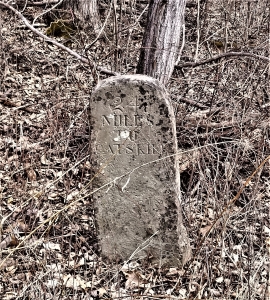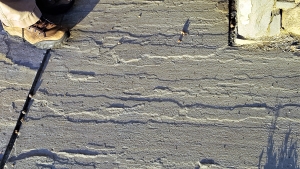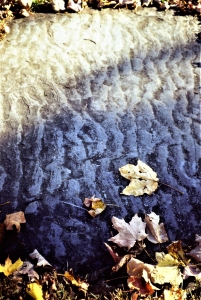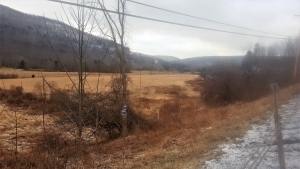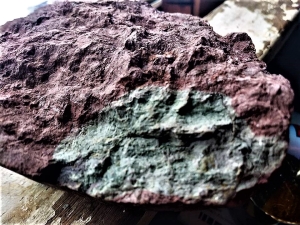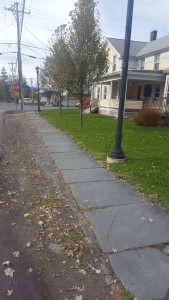The View from Sunset Rock.
The view from Sunset rock
Robert and Johanna Titus; The Catskill Geologists.
The Mountain Eagle; Mar. 22, 2019
Winter is ending; it won’t be long before we are all outside again, enjoying our Catskills. Perhaps you will find yourselves at North Lake sometime this summer. Our absolutely favorite view, east of the Rockies, is from a location called Sunset Rock. It’s actually only one “Sunset Rock.” We really don’t know how many of them there are, but this is the one that overlooks North and South Lakes, along with the old Catskill Mountain House site. See our illustration (courtesy Wikimedia Commons).
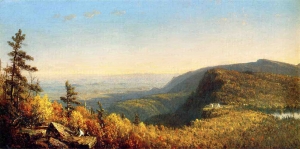
During the 19th Century Sunset Rock attracted almost all of those artists who belonged to the famed Hudson Valley School of landscape art. Many of them painted the vista that is seen there. Some very fine paintings date back to this time. You would think it to be hard for us to pick our favorite, but it is not. Ours was painted by Sanford Robinson Gifford in 1862. Gifford’s view looks to the south and includes the old hotel, at that time the most famed mountain resort in all of North America.
Like so many of his colleagues, Gifford cheated just a little bit. Why let reality get in the way of a fine painting? He created a broad landscape U, stretching out between his foreground and the hotel. We are glad he did that; that U suits our needs when we look at the painting. We saw it ourselves two years ago at Cedar Grove, the Thomas Cole Historical Site. It was quite the experience, you see, the two of us see this painted scene and the real landscape differently from most people. Whenever we look at this view, we are transported back into the Ice Age.
We stand atop the Sunset Rock ledge, always about 16,000 years ago. It is early in the history of one of the greatest chapters of the most recent Ice Age. This is called the Grand Gorge advance of the ice. We look left, to the east, and we see the Hudson Valley filling with ice. A great glacier has been descending this valley and it is on its way south toward the New York City vicinity.
We watch as the valley fills to the top. Then some of the ice passes through Gifford’s broad U. It continues westward. That ice is grinding into the bedrock below it and carving the basin that will eventually make North Lake. Next, we see another glacier rising from the vicinity of Kaaterskill Falls. It too carves the bedrock beneath it; that will become the basin of South Lake.
The two glaciers collide with each other, but the advance of the ice does not halt. We are still standing upon the Sunset Rock Ledge and we watch as the ice continues to rise before us. Far to the north, in what is today Labrador, it has been snowing heavily for centuries. Snow, up there, is piling up and hardening into ice. That ice has formed into an enormous ice sheet. A good bit of that ice has crossed the Adirondacks and then some of it has been funneled into the Hudson Valley. As the Hudson Valley ice has thickened, a lot of it has been flooding into the North Lake region and continuing onward. It will, eventually submerge much of the Catskills in ice.
That’s what we see at Sunset Rock; you will likely enjoy the view almost, but perhaps not quite as much.
The authors are just about ready to publish a new book “The Hudson River Schools of Art and Their Ice Age Origins.” Contact them at randjtitus@prodigy.net. Join their facebook page “The Catskill Geologist.”


